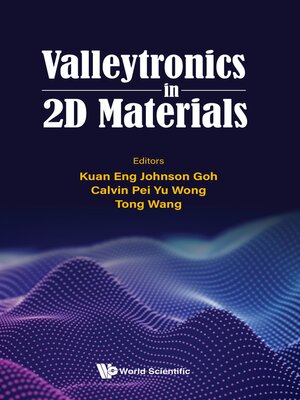
Sign up to save your library
With an OverDrive account, you can save your favorite libraries for at-a-glance information about availability. Find out more about OverDrive accounts.
Find this title in Libby, the library reading app by OverDrive.



Search for a digital library with this title
Title found at these libraries:
| Loading... |
Driven by the advent of two-dimensional materials, valleytronics is emerging as the next hot field of research in materials science. While the use of charge or spin degrees of freedom in electronic materials as information carriers is familiar and well-appreciated, employment of the valley degree of freedom as an information carrier has remained elusive for many decades. Shortly following the discovery of isolated graphene, 2D semiconductors such as transition metal dichalcogenides were also isolated and investigated. We now understand that these materials can have separately addressable valleys because each valley can be uniquely coupled to a spin state. This imparts the ability to address different valleys (like pseudospins) with electric field, magnetic field, or light, and there is now a real possibility to engineer practical devices based on using valley as the information carrier.Valleytronics in 2D Materials is the first book in the world on the topic of valleytronics. The reader is introduced to the concept via a brief history emphasizing the challenges that impeded its development for so long. We then dive into the valley physics of 2D semiconductors to explain the recent excitement in 2D valleytronics, the scientific investigations to confirm the addressable valleys, and the attempts to engineer valley devices for practical purposes. The text takes on a decidedly practical approach towards the subject, seeking to bring the reader quickly into the field by presenting the minimum theoretical basis for understanding the use of the valley degree of freedom in devices. A selection of key works establishing the scientific underpinnings of valley addressability and control are described to help the reader grasp the current stage of understanding, the technical foundations established, and the open questions. The renewal in valleytronics is yet unfinished, but with more than a decade of research and engineering efforts devoted in recent times, this book seeks to provide a timely reference for students, scientists and engineers to join this exciting journey and perhaps help to create the next disruption in information technology.






